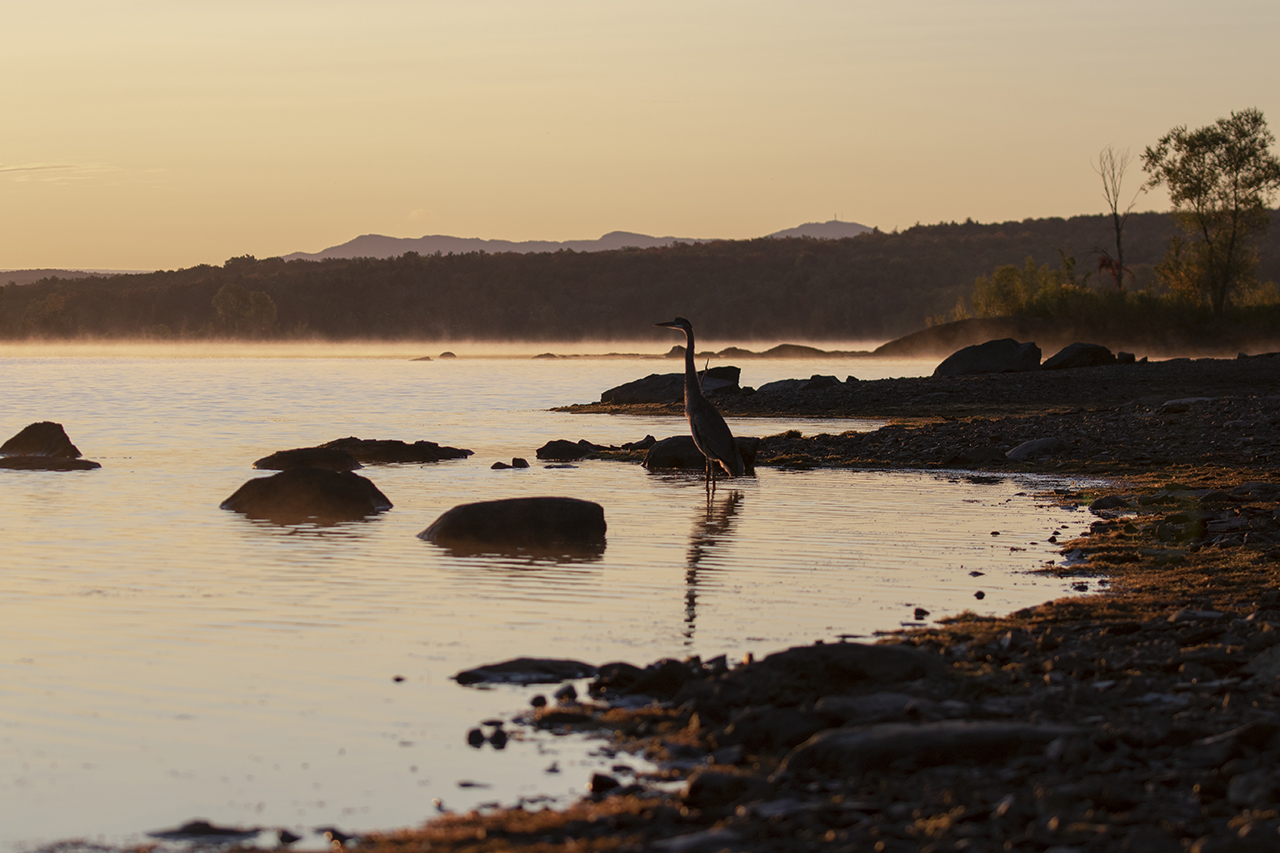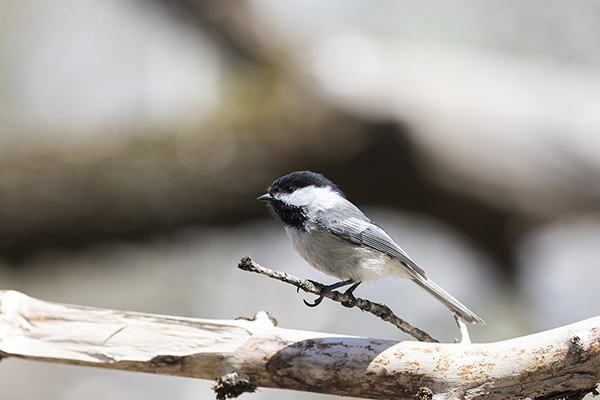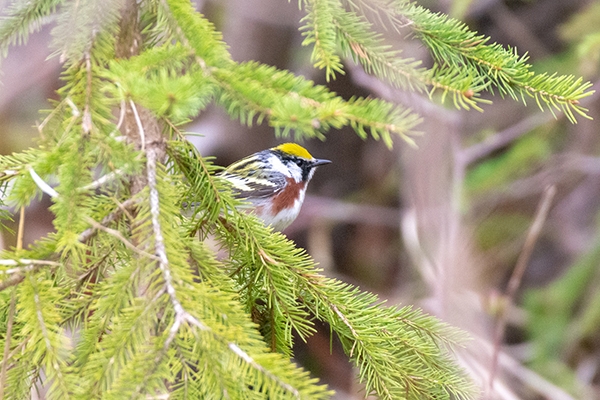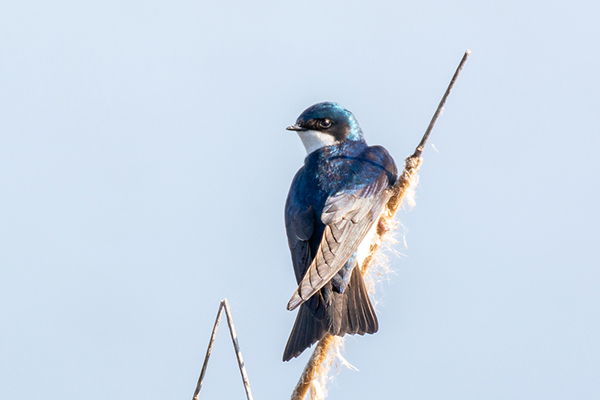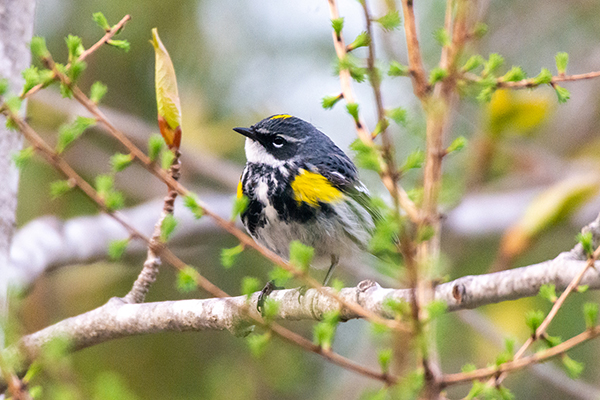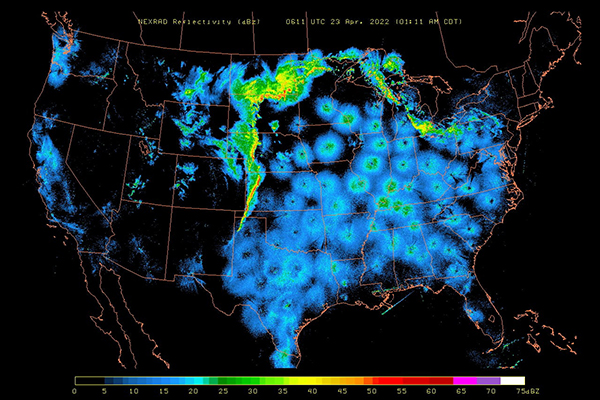The favourite season for birders
In collaboration with QuébecOiseaux
Ask any birder to name their favourite season and they’ll almost certainly say spring, especially May. Although you can do some great bird watching in winter, having a little more diversity in your binoculars doesn't disappoint anyone after a few months of looking at a limited number of species.
From March onwards, this number gradually increases, reaching a peak in May. Some species will remain in the southern part of the province during the summer, while others will continue their journey to the boreal forest or even the Arctic. Then, beginning in August, they’ll initiate the journey in reverse.
Why do birds migrate?
From a human point of view, migration is a spectacular phenomenon, but for birds, it’s a long and winding road chock full of dangers: hazardous weather conditions, a search for food in habitats they’re not used to, collisions with buildings of all kinds, and all sorts of other perils. Many birds fall by the wayside.
If this is the case, why do most of the birds found in Québec migrate? Wouldn't it be easier for them to stay in one place all year long?
Contrary to popular belief, it isn’t so much the cold that birds flee, but rather the lack of food. For insectivores, the situation is unequivocal. Some species will manage to find a few insects, in the crevices of tree trunks, for example, but for swallows, warblers, and other aerial insectivores, good luck catching mosquitoes in January!
The same is true for waterfowl. Except for a few ducks that will find food in the waters of the St. Lawrence River or in a waterway that isn’t frozen, the vast majority will go a little further south in the fall.
Okay, but you might ask: if they can find insects and food year-round in the south, why do they bother to come back north every spring?
Outdoor enthusiasts know the answer. In summer, our forests and marshes are particularly rich in insects. The resource is more than abundant and can easily fill all the little beaks to be fed. One can also imagine that the competition for food between migratory birds and local breeding species could not be maintained all year long. Under these circumstances, many return to the vast expanses and all-you-can-eat buffet of the boreal forest.
World Migratory Bird Day
In Québec , there are two very different migration seasons. The spring migration season gently begins in March. Ring-billed gulls, red-winged blackbirds, and song sparrows set the tone, then in April, species are added in dribs and drabs, especially ducks and geese. As for passerines, it’s during the second and third weeks of May that the "migratory faucet" flows freely. Warblers, vireos, flycatchers, and the like are everywhere, and often for only a few days.
World Migratory Bird Day is celebrated each year on the second Saturday of May. For the occasion, most birding clubs offer guided hikes and, for the past few years, the Cornell Lab of Ornithology and its partners, including QuébecOiseaux, have organized an intensive birding day.
The fall migration is somewhat more extended in time. Shorebirds, which have nested on the tundra, usually return first, starting in late July and continuing through August. Warblers, swallows, and other insectivores tend to come in from mid-August to late September. October brings geese, ducks, and buntings. By November, most of the migrants have already left, but there are still some surprises, as birds that have moved away from their usual range can still be spotted.
There’s also a day long bird-watching event to enjoy the fall migration around the second Saturday in October.
How to predict migration?
In recent years, ornithologists have developed an expertise in predicting the best mornings for bird watching through the analysis and interpretation of weather radar images. In fact, almost all birds migrate during the night, and these radars detect the masses of birds that take off at the end of the day, thus making it possible to predict whether the next morning will stay rather quiet or will be “for the birds.”
Another way to anticipate movement is to look at the weather, especially wind direction. In the spring, birds will move mostly when the wind is from the south or southwest. In the fall, they’ll look for north or northwest winds.
There are now specialized tools for predicting avian migrations:
- BirdCast
- Facebook page in French: Suivre la migration par radar météo (tracking migration by weather radar)
Spring migration is coming to an end, but you still have a few days to enjoy it. To see as many birds as possible, head outside every chance you get and, ideally, very early in the morning!

About Jean-Sébastien Guénette
A biologist by training, Jean-Sébastien earned a master’s degree from Université de Moncton, where he studied thresholds in forest bird response to habitat alteration. He went on to work as a researcher for the Canada Research Chair in Landscape Conservation, then did a stint in the private sector, before landing at Observatoire d’oiseaux de Tadoussac. In 2005, he took over as executive director of QuébecOiseaux. In addition to a passion for ornithology, Jean-Sébastien also has a keen interest in technology, travel, and photography.
